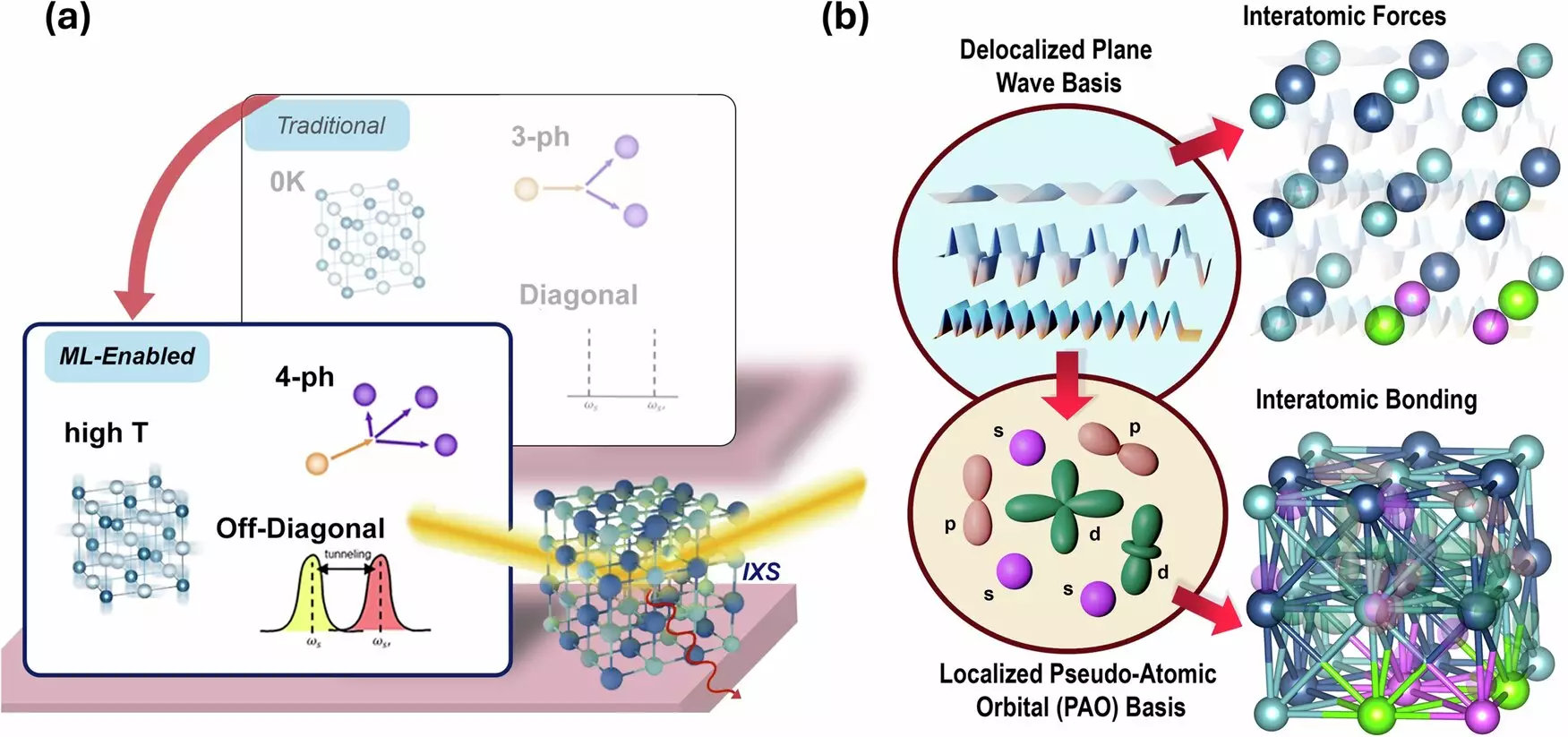Recent advancements in materials science have unveiled exciting possibilities for energy conversion technologies, particularly through the study of thermoelectric materials. Among these, germanium telluride (GeTe) has captured considerable attention due to its peculiar behavior concerning thermal conductivity. Researchers at Cornell University have leveraged machine learning techniques in tandem with sophisticated X-ray methodologies to dissect the enigma surrounding GeTe’s thermal properties. These findings not only illuminate the thermal dynamics of GeTe but also hold implications for the broader class of phase-change materials, which are integral to various cutting-edge applications.
Historically, scientists have observed that the cubic phase of GeTe exhibits an unusual increase in lattice thermal conductivity as its temperature rises — a phenomenon that has perplexed researchers. Understanding why this property occurs is critical; merely acknowledging its presence does not contribute to effective applications or improvements in materials design. The Cornell team, led by associate professor Zhiting Tian, has made significant strides in addressing this knowledge gap. Through their meticulous research published in *Nature Communications*, they delve into the underlying changes occurring at the atomic level in GeTe as it transitions in phases with rising temperature.
The Cornell research team’s findings indicate that the phase transition of GeTe from a rhombohedral structure to a cubic structure results in enhanced bonding between second-nearest neighbors — specifically, the Ge-Ge and Te-Te atomic pairs. This strengthening is noteworthy: the bond strength of Ge-Ge increases by 8.3%, while that of Te-Te dramatically ascends by an astounding 103% as temperatures escalate from 693 K to 850 K. This substantial increase in bond strength correlates with the unexpected rise in lattice thermal conductivity, leading to a more nuanced understanding of thermal transport mechanisms in phase-change materials.
The study exemplifies a pioneering blend of advanced computational techniques and experimental validation. By harnessing machine learning in conjunction with first-principles calculations, the researchers accurately modeled the changing interactions at play in GeTe. The integration of X-ray scattering measurements further substantiated their computational predictions. Tian emphasized the computational challenges associated with factoring in temperature effects and higher-order scattering. However, the use of machine learning technologies allowed the researchers to analyze complex interactions more robustly and efficiently, paving the way for a comprehensive examination of thermal behavior in materials undergoing phase transitions.
The implications of this research extend beyond GeTe alone. The team has identified other materials, such as tin telluride and tin selenide, that exhibit similar enhancements in thermal conductivity under comparable conditions. This finding bears significant potential not only for improving the efficiency of thermoelectric materials but also for revolutionizing energy conversion technologies overall. With the pressing global need for sustainable energy solutions, the ability to model, predict, and manipulate thermal transport properties in materials positions researchers to engineer more effective thermoelectric devices.
The relevance of GeTe also lies in its potential as a safer alternative to lead telluride, which has faced scrutiny due to the toxicity of lead. With environmental sustainability in focus, the advancements in understanding GeTe’s properties could foster the development of new materials that harness the same beneficial thermoelectric characteristics without compromising human health or ecological safety. As Tian aptly points out, the journey toward creating more sustainable materials continues, driven by innovative research methodologies and a deeper grasp of atomic interactions.
The groundbreaking work conducted at Cornell University illustrates a significant leap forward in understanding the thermal behavior of GeTe and related phase-change materials. Through an interplay of machine learning and experimental precision, researchers have begun to unravel the complexities of thermal conductivity—setting the stage for transformative advancements in energy applications. As the scientific community strives towards more efficient, sustainable energy solutions, the revelations from this research could prove instrumental in devising next-generation thermoelectric materials.


Leave a Reply